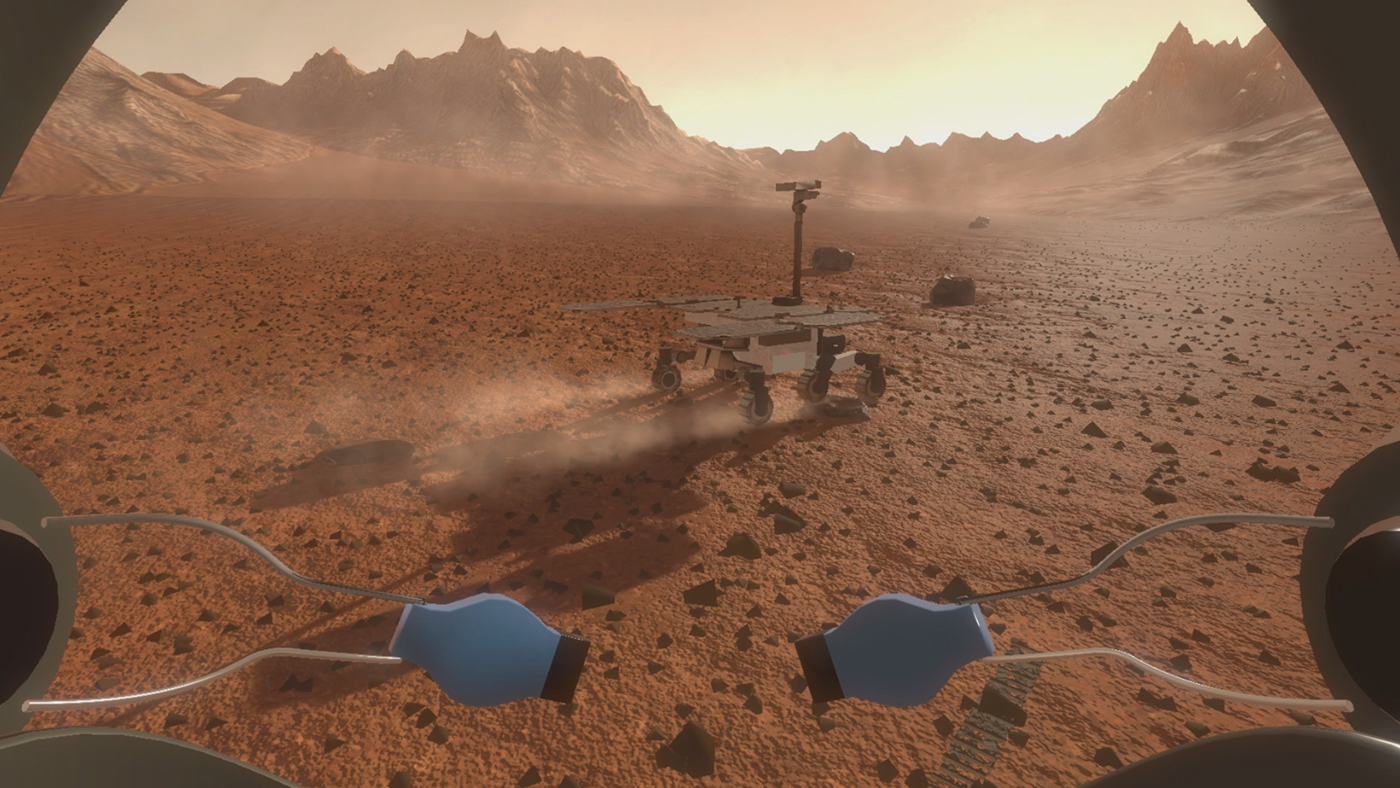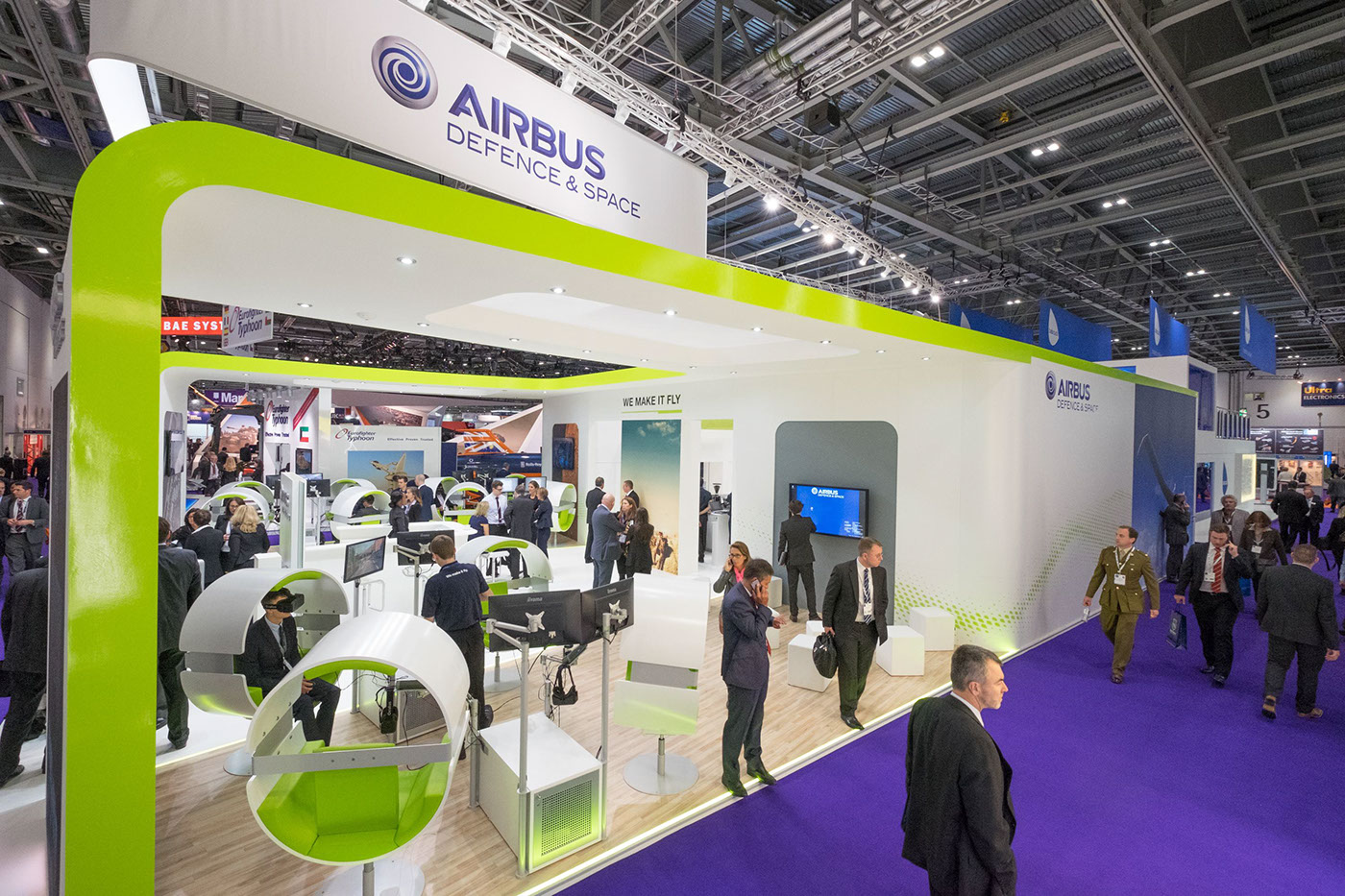
At the start of 2015 I was lucky enough to be part of a new project for Airbus Group. The project brief was to deliver three scenarios that would showcase the Airbus products, and make use of the new Oculus Virtual Reality technology. In a very forward thinking move, Airbus planned to use this software and the Oculus hardware in their future trade shows around the world, with the aim of engaging their customers in a brand new way.
I found the project really exciting. Firstly because I had never worked on a VR project before, and secondly it was the perfect opportunity to try out the new feature of Unity 3D 5, which along with a lot of material and lighting improvements, also featured new VR support we were eager to try on a live project.
I was also given the opportunity to be lead on this project. With a team of seven and a selection of technical and creative challenges ahead I was very excited (and a little nervous) to take on the role!
The team was broken down into two developer and five artists. The developers began by running off with (and some might say “hogging”) the Oculus while the rest of us artists started to block out the scenarios in an effort to try and visualize how they would feel inside the Oculus headset.
User experience was our biggest concern. We wanted to make sure the experiences felt natural and were easy to use, especially considering that the end user was probably going to be a non gamer, and might not have even been aware of this technology before seeing it at the trade show.
With this in mind, and the fact airbus wanted to keep the experiences similar lengths, we went for a more linear experience. This mostly took the form of moving the player along pre created paths, and using simple triggers to start and stop events as they approached them.




As we were a fairly small team (with ambitious plans!), we chose to re use many assets from previous projects, as well as purchasing some parts from the unity asset store. It took a bit of research to ensure everything would work together, but generally this was a very good move. It allowed us to save time on development and focus on the more important user experience.
It did however lead to a lot of project bloat – when we were about 80% through creating the project we had to do some serious optimisation, in order to ensure the application continued to run smoothly on the Oculus DK 2. If we didn't get the frame rate above roughly 150 frames per second, the oculus would halve the frame rate automatically and take a nice smooth 75 fps, down to an uncomfortable 33.




In order to combat this we made use of many tricks in Unity, but the main one was to cull objects as soon and as often as possible. Its (hopefully) not visible when using the experience, but as the player moves throughout the scene objects are constantly being turned off and on, so that the computer only had to render what was necessary.
The last major hurdle we had to tackle was motion sickness. This was a unique experience, and hardware not many people had experienced before. Initially we moved the player around the scene fairly quickly, at some points controlling where they look. We discovered this was very uncomfortable, we had to slow down a lot of the speeds of movement, and allow the user to fully control where they looked all the time. There was a small challenge of how to make sure the players did not miss anything, however this was quite simply solved with audio ques (we had a voice over guide recorded) and animation to lead the player vision.
The results of this project were really outstanding. It enabled Airbus to showcase their products in a really cutting edge and engaging way.
At the first trade show they used it at, not only were they able to reduce the size of their stand by 75%, saving a large cost, but they also saw significant visitor increase based on the years before.
I learnt a lot about creating VR applications with this project, and feel the potential for this hardware is massive. I'm looking forward to working with it further on new projects in the future.

Below are 360 videos of each of the experinces, best viewed on smartphones or using a VR headset.




